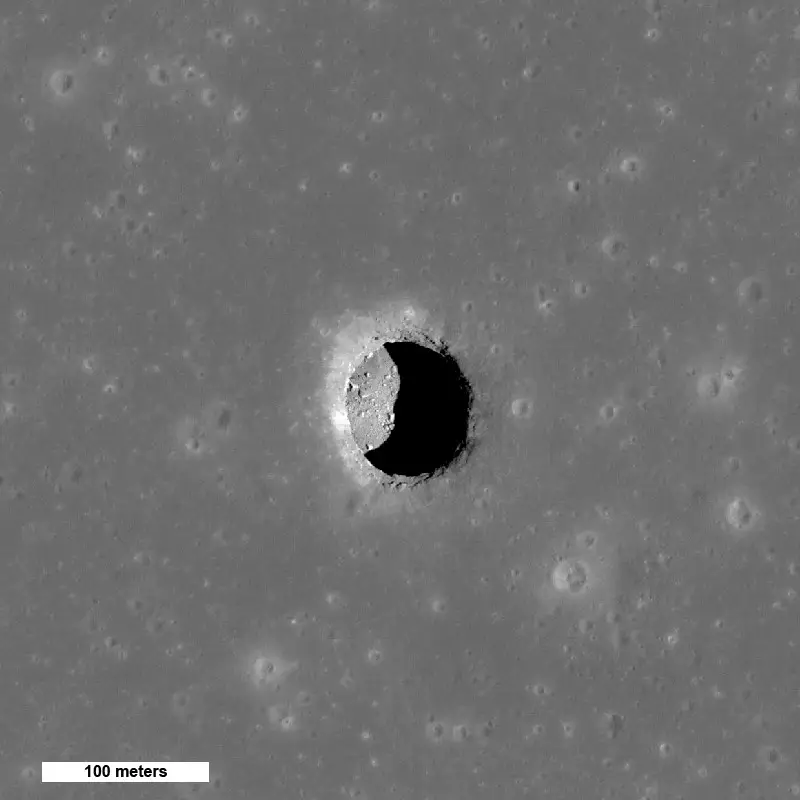ButSpeak.com
News which Matters.

In a universe filled with wonders, Mars continues to captivate with its mysterious pits – enigmatic holes scattered across the planet’s ancient volcanic terrains. Recently, an image captured by NASA’s HiRISE camera in 2022, featured as the University of Arizona HiRISE’s Picture of the Day, has reignited fascination with these intriguing geological features.
Located on the flanks of Mars’s colossal Tharsis volcanoes, these pits are believed to be remnants of ancient lava tubes. While Mars is no longer volcanically active, these underground structures may have persisted, occasionally collapsing to form what scientists term “skylights” – openings that offer glimpses into the hidden depths below.
According to Brandon Johnson, a geophysicist at Purdue University, these pits represent more than mere geological anomalies. “They’re places where astronauts might be able to go and be safe from radiation,” he explained, hinting at their potential as sheltered habitats for future human missions to Mars.

Yet, the true nature of these cavernous voids remains shrouded in mystery. Ross Beyer, a planetary scientist with the SETI Institute, speculates, “These pits we see could open into larger caves, or they could just be isolated pits. There’s no way to know what’s in them until we explore them in more detail.”
The allure of these Martian pits extends beyond potential human habitation. They could harbor clues to the existence of extraterrestrial life, offering protected environments where microbial organisms might thrive. Similar lava tubes on Earth and the Moon provide warmth conducive to life, prompting speculation about similar conditions on Mars.
The HiRISE camera, launched aboard NASA’s Mars Reconnaissance Orbiter in 2005, has been pivotal in our exploration of Mars, capturing over 80,000 images and transforming our understanding of the red planet. However, its orbital perspective limits our ability to fully explore these pits’ interiors.
Ross Beyer elaborated, “There is a limit to the ‘angle’ that we can get from orbit to look ‘into’ these pits. So sometimes we can see ‘walls’ and sometimes we can’t.”
To delve deeper, future missions may involve dispatching rovers to investigate these pits firsthand. Johnson highlighted proposed missions that would deploy robots to descend into these skylights, potentially unveiling their secrets.
Despite the tantalizing possibilities, Johnson remains cautious about expectations of finding life on Mars. “This is a good place to look, but we don’t know if there’s life on Mars at all,” he emphasized.
For now, as our quest for knowledge continues, spacecraft like HiRISE will persist in capturing detailed images of Martian volcanic regions, striving to unlock the mysteries hidden within these enigmatic pits.